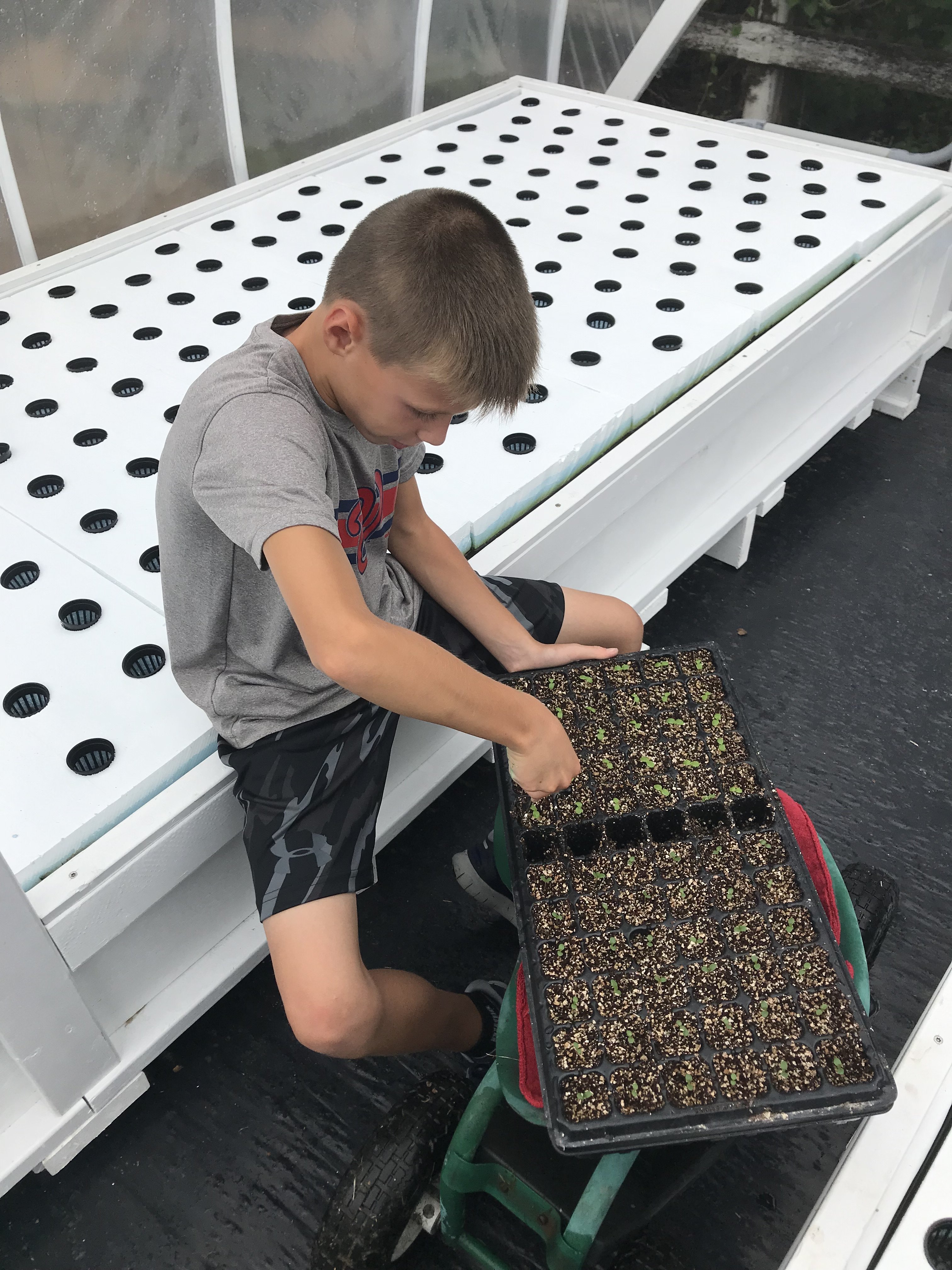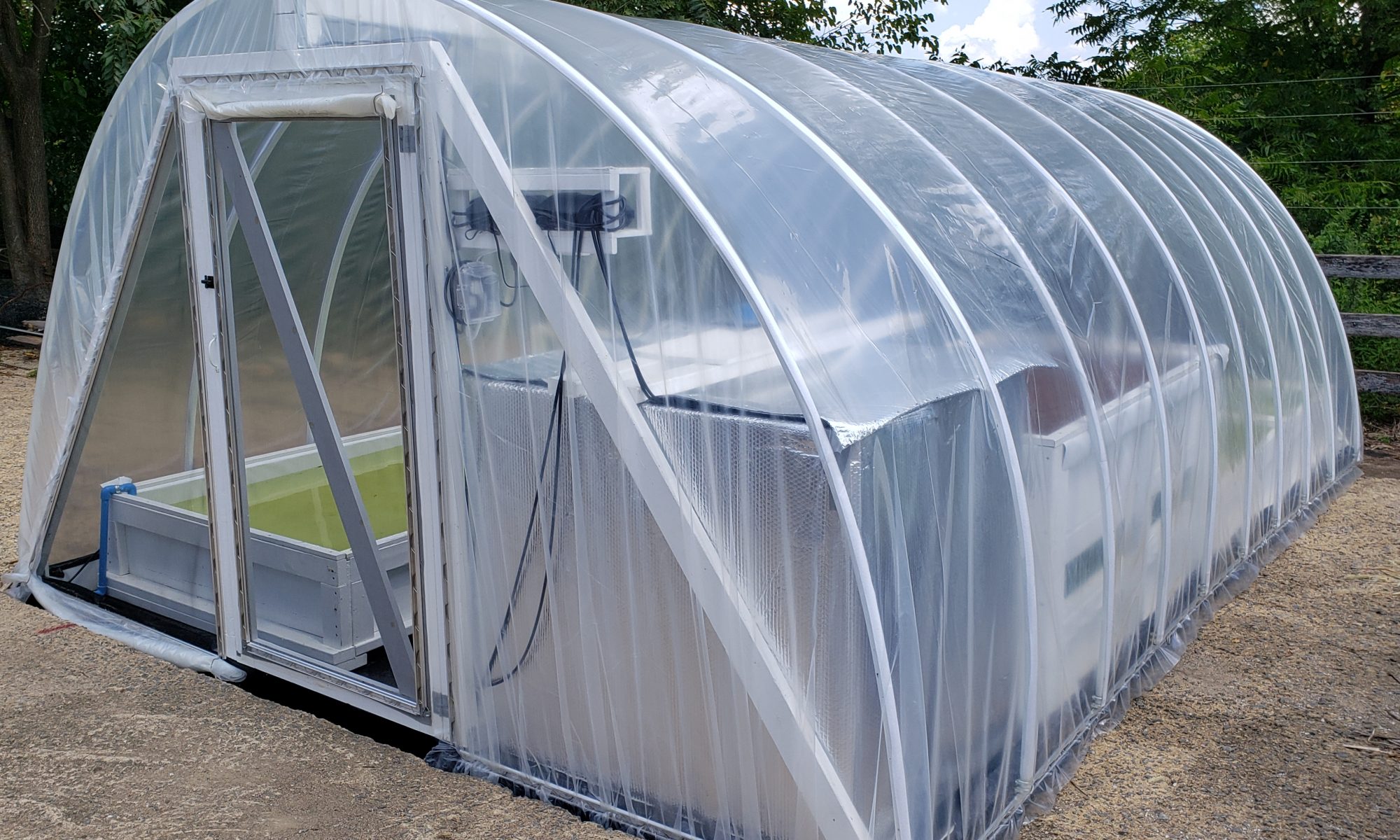The fish had not been eating as much and the plants were not growing well. A crop of Butterhead lettuce seedlings all died within two weeks of being rafted. Something was wrong.
Background
I’ve been operating my backyard 48 square foot deep water culture Aquaponics system for about 4 years now and have never seen these combination of events. The plants had been growing well and the fish active and eating. I had gotten complacent and was not checking water quality regularly. The first test sample revealed a high ammonia level of 4 ppm, and the pH reading was 6.0. It appeared that the nitrification process had stopped working and suspected the pH was lower than 6.0. I realized that 6.0 was the lowest reading either of my test kits could measure so I purchased an electronic meter pen for about $10 that could measure pH from 0 to 14.

Yikes! The pH is 4.50! This is too low for my Tilapia, plants, and bacteria. It should be between 6.2 to 6.8.
The Solution
Searching the internet I found an informative article written by Sylvia Bernstein titled “Managing pH in Aquaponic Systems“. In this article she points out that during the life of an Aquaponics system the pH will naturally go down as a result of the nitrification process. She says, “…the nitrogen cycle actually produces nitric acid, which will naturally cause your pH to go down. ” She explains that the hardness of the water “dictates the buffering capacity”. I’ve been keeping a mesh bag full of crushed eggs shells in the system to supplement the calcium, but it has not been enough to offset the production of nitric acid.
Following her advise, I checked the water hardness and found carbonate hardness (KH) was around 5 dKH (or 89.5 ppm) and general hardness (GH) was at about 358 ppm. So the buffering capacity was adequate to raise the pH by adding calcium carbonate and potassium carbonate.
One last check of the pH measured 4.90 (water was 72 degrees F). This system has a total water volume of about 560 gallons. Not wanting to move the pH up too fast I used what was recommended to treat 200 gallons of water. I added 5 teaspoons of each powder into two separate glass pint jars of system water and stirred until dissolved. I slowly poured out the first jar over the air stone at the end of the first trough where the fish tank water flowed into the trough and waited for it to dissipate into the water. Then I slowly poured in the second jar.
The next day (about 16 hours later) the fish tank pH was 6.00 and the troughs were 6.22. Problem solved. I’ll monitor daily and add a little more to move the pH up to around 6.5.
Lessons Learned
- Check the water quality at least every three months and keep a log of the results.
- Use a pH Pen meter that goes from 0 to 14 pH.







 My Niece Allie loves Kale so we gave her a bouquet to take back to college! Fresh cut organic baby Kale from our Aquaponic garden. Kale grows great in the cold – the outside temperature was in the low 30s (F) last night and the green house was about 45 degrees Fahrenheit. I’ve been cutting a big handful every morning when I go out to feed the fish. We use it in smoothies and salads. I’m amazed how long it lasts in the fridge! I’ll fill a gallon bag full and it stays fresh for at least a week or two.
My Niece Allie loves Kale so we gave her a bouquet to take back to college! Fresh cut organic baby Kale from our Aquaponic garden. Kale grows great in the cold – the outside temperature was in the low 30s (F) last night and the green house was about 45 degrees Fahrenheit. I’ve been cutting a big handful every morning when I go out to feed the fish. We use it in smoothies and salads. I’m amazed how long it lasts in the fridge! I’ll fill a gallon bag full and it stays fresh for at least a week or two.